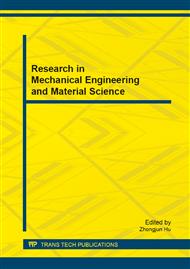p.595
p.599
p.603
p.607
p.611
p.616
p.620
p.624
p.627
Local and Global Contrast for Saliency Estimate in DCT Domain
Abstract:
In this paper, we present a new bottom-up visual saliency model, which utilizes local and global contrast method to calculate the saliency in DCT domain. Our proposed method is firstly used in the DCT domain. The local contrast method uses the center-surround operation to compute the local saliency, and the global contrast method calculate the dissimilarity between DCT blocks of image and any other DCT blocks in any location. The final saliency is generated by combining the local with global contrast saliency. Experimental evaluation on a publicly available benchmark dataset shows the proposed model can acquire state-of-the-art results and outperform the other models in terms of the ROC area.
Info:
Periodical:
Pages:
611-615
Citation:
Online since:
October 2013
Authors:
Keywords:
Price:
Сopyright:
© 2014 Trans Tech Publications Ltd. All Rights Reserved
Share:
Citation:


